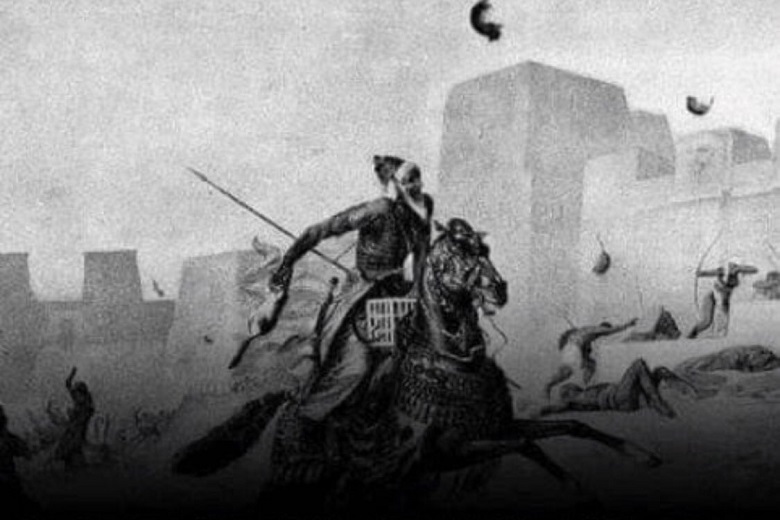What is Cyropedia and why did Caesar and Macedon read it
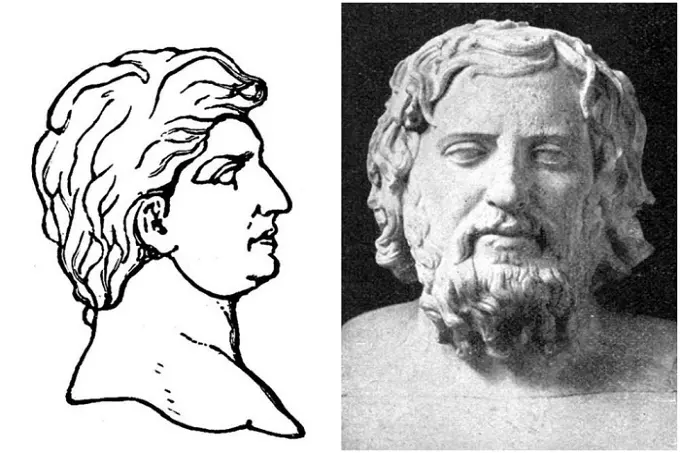
Admiration for Cyrus the Great, founder of the Persian Achaemenid Empire, inspired the Athenian soldier, statesman, and historian Xenophon to create the Cyropaedia. Initially, this work was written as a manual on politics and morality. But soon, the “Education of Cyrus” acquired a different character.
Cyrus was the founder of the Persian Achaemenid Empire, one of the largest empires the world has ever seen. In doing so, he conquered the Median Empire, the Lydian Empire, and the Neo-Babylonian Empire so that his territory stretched from the Indus River to the Mediterranean Sea.
He also created the famous Persian Immortals, an elite unit of ten thousand soldiers. Later, the Persian king campaigned in Central Asia, where he fought the Massagetae, a nomadic Scythian tribe. According to the most widely accepted sources, this campaign ended in his defeat and death, although some argue that he simply returned to his capital and died there.
Along with his conquests, Cyrus is remembered for many other accomplishments. He created an efficient system of government for his empire, dividing it into satrapies, or administrative divisions, controlled by officials known as satraps, who had wide-ranging powers. An extensive road and postal system connected the vast territories of his empire. Cyrus also issued edicts that introduced a policy of religious tolerance and allowed the Jews to return from their Babylonian exile. As a result, philosophers, politicians, and military leaders admired the Persian king for a long time and sought to imitate him.
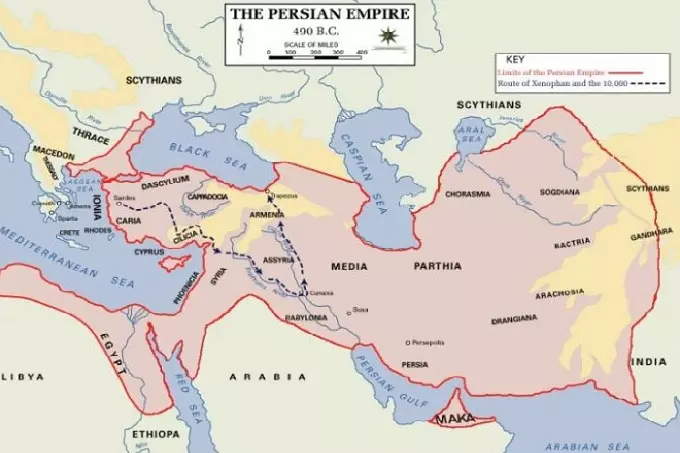
Xenophon
Xenophon was a Greek of Athenian origin and was not a contemporary of Cyrus the Great (c. 600-530 BC). However, he knew well Achaemenid Persia and its royal family. In his youth, Xenophon served first as a simple soldier, then as commander of a group of Greek mercenaries known as “The Ten Thousand”.
All of them were recruited under false pretenses, after which they ended up in Achaemenid territory on the side that lost the civil war. Leading The Ten Thousand on an arduous march to safety, he joined a Spartan army campaigning in Asia Minor, where he fought against his home city of Athens and was possibly exiled as a result. Then he moved to an estate near Olympia, which was provided to him by the grateful Spartans.
During his exile, he most likely composed the Cyropaedia, along with several other works. As a philosopher and historian, Xenophon was well prepared. In his youth, he was a student and friend of Socrates, which may have been another reason for his exile. His education and personal experience made him one of the greatest writers of antiquity, and his work spans many genres, and his many talents are fully displayed in the Cyropaedia, a work that also covers a huge number of different genres and defies classification.
Job classification
Despite the fact that the narrative of the Cyropaedia is quite straightforward and is a description of the upbringing of an ideal ruler, it turned out to be very difficult to classify this work. The Cyropaedia does not fit into any of the known surviving genres of classical texts. It has been variously interpreted as a biography, an early novel, a leadership manifesto, or a philosophical work. Xenophon’s motives in writing The Education of Cyrus are obscure, although he appears to have intended to provide moral instruction to his audience. In this sense, its closest literary equivalent was the medieval genre of “mirrors for rulers”. These texts served as a sort of textbook for rulers on aspects of good conduct, government, and politics. They were aimed at creating images of rulers to emulate or shun.
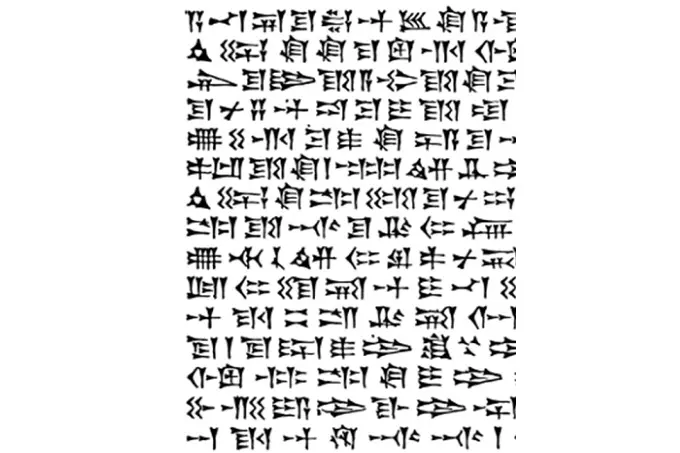
The value of the Cyropedia as a purely historical work is questionable. Most scholars agree that Xenophon did not conceive this work as historical. Xenophon (c. 430-354 BC) and Cyrus the Great (c. 600-530 BC) were not contemporaries, so the work was not based on firsthand knowledge. Some of what is described in the book, to some extent, reflected the current events and customs of the Persian Achaemenid court in the time of Xenophon. The work describes many events and personalities that still cannot be confirmed in other sources, so some of them were found to be inaccurate. As a result, the reliability of the Cyropaedia as a source for Persian Achaemenid history has been regularly questioned.
This work consists of eight chapters or books and an epilogue, which is included in the eighth book, added later. Consequently, only the first book is devoted to the education of Cyrus the Great. Other books recount the rest of his life, and the epilogue offers a grim assessment of contemporary fourth-century Achaemenid Persian society. However, in the first book, Xenophon informs the reader that the Cyropaedia is primarily a reflection on why some rulers are willingly obeyed while others are not. He also wrote that most people do not follow their rulers, which cannot be said about Cyrus, who was an exception, for he inspired obedience to his people.
The rest of the first book deals with the genealogy of Cyrus and describes the Persian educational system as understood by Xenophon. His description of pre-imperial Persian society is considered unusual by many scholars. Since this most likely reflects the Spartan traditions, the Greek city-state with which Xenophon was quite closely associated and whose traditions he described in his other work “Constitution of the Lacedaemonians”. The first book dedicated to the Persian king also describes how Cyrus was at the court of his maternal grandfather, the great ruler Astyages.
Books two through seven chronicles the Persian king’s life as a vassal of Media and his creation of the largest empire the world has ever seen. In this section, stories of military affairs are interspersed with stories that appear to have been borrowed from Eastern narrative traditions. The second book describes the reorganization and reform of the Persian army by Cyrus, as a result of which a well-functioning military machine was created. In the third book, the Persian king begins his conquests. The work then describes how Cyrus conquered the Scythians (Medes) and Armenians (Lydians). The fourth to sixth books are devoted to the wars of Cyrus with Assyria (Babylon), which culminate in the seventh book with its final conquest.
In his work, Xenophon made every effort to depict Cyrus as an example of classical virtues. He is portrayed as a loyal vassal of the Medes who acts on their behalf against the more aggressive and assertive Babylonians. However, his methods are best described as Machiavellian. The Persian king makes alliances to isolate and surround his enemies both politically and militarily. His final conquest of Babylon is accomplished by sneaking into the city during the festival. By the end of these books, Cyrus had created a multinational army and conquered a vast empire.
The eighth and final book continues the narrative but mainly focuses on the reign of Cyrus and his ideas of government. As a loyal and virtuous vassal, he peacefully ascended the throne after the death of his uncle. There are no wars or strife here. But in fact, what is known is that at the beginning of Cyrus’ career, there was a war between the Persians and the Medes.
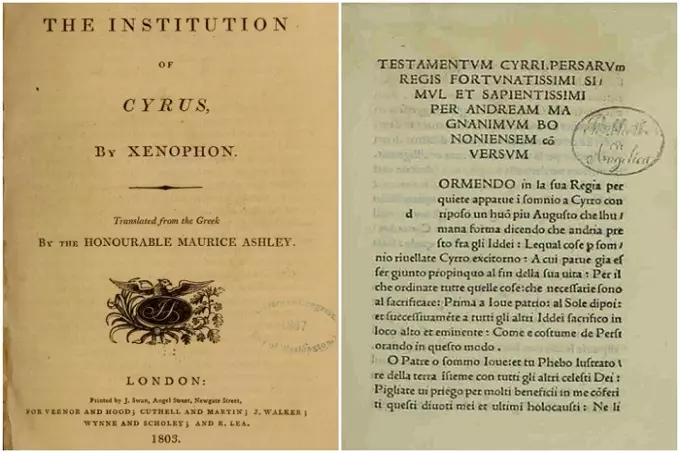
However, once it ended, the actual transfer of power went fairly smoothly, mainly because the Persian and Median royal families were closely related. The eighth book describes how Cyrus divided the empire into satrapies and how he died peacefully in his capital.
The section of the work then transitions into what some scholars call an epilogue. The authorship of this section has been questioned, and some have argued that it was added by another author at a later date. It describes the impetuous collapse of the Persian king’s empire after his death, along with a grim assessment of modern Persia during the Achaemenids of the fourth century. In particular, the author notes the decline of Persian morality since the reign of Cyrus. This theoretical inconsistency with the rest of the work, which focuses on describing the Persian king as an ideal ruler, has caused much controversy.
Influence
In classical antiquity, the Cyropaedia and its author were highly respected. Many historians and philosophers of the time, such as Cicero and Polybius, considered this work a masterpiece. However, they also discussed how to classify this work. Xenophon himself was considered more of a philosopher than a historian. Thus, this book was most often considered a philosophical work in ancient times. Some believed it was composed in response to Plato’s “Republic”, or vice versa, since some parts refer specifically to the “Education of Cyrus”. The Roman educator and orator Quintilian ranked Xenophon next to Plato in his book The Education of an Orator, in part because of the Cyropaedia.
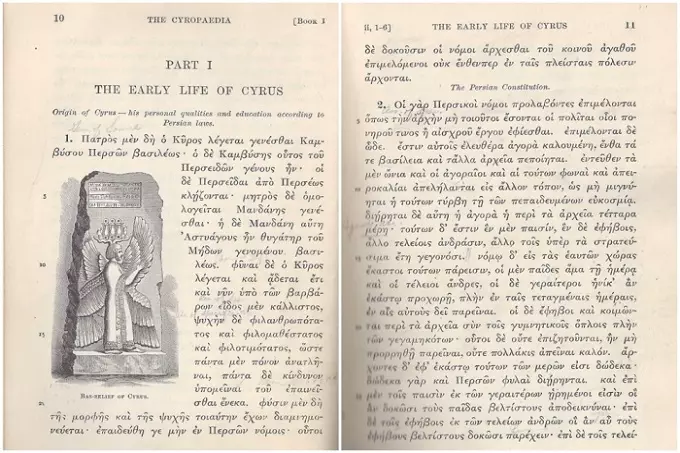
It is also worth noting that this book was popular among the great military leaders of antiquity. Both Alexander the Great and the great Roman general Gaius Julius praised this work, and Scipio Africanus allegedly carried one of its copies with him. It is more difficult for historians of classical antiquity to determine the place and influence of “Cyropaedia”.
Xenophon wrote other apparently historical works, such as Hellenica, which were modeled after the work of Thucydides and others. When compared with Hellenica and other modern histories, it becomes clear that Xenophon did not expect the Cyropaedia to become another historical work.
Heritage
Like many works of classical antiquity, the book dedicated to the Persian king was rediscovered by Western Europeans during the late Middle Ages and had a huge impact on the genre of medieval literature “Mirrors for Princes”, although it was not intended as such. Several rulers of late medieval Italy nevertheless took Cyrus as a role model. Machiavelli refers to The Education of Cyrus, although it deals with the Persian ruler in a more critical manner. Perhaps the Cyropaedia enjoyed one of its greatest periods of popularity during the Enlightenment and was read by very popular people from Bacon and Jonathan Swift to Thomas Jefferson, who kept a couple of copies in his library – one for reading and the other as reference material for correction.
By the nineteenth century, the work’s popularity had declined markedly due to its pro-monarchist stance. However, in the 20th and 21st centuries, the popularity of Xenophon and his book increased again. Among historians, the popularity of this work was the result of criticism of Herodotus and his description of Persia during the Achaemenids. As a result, Cyropaedia remains a popular and widely read work, despite questions about the work’s purpose and its general validity.

